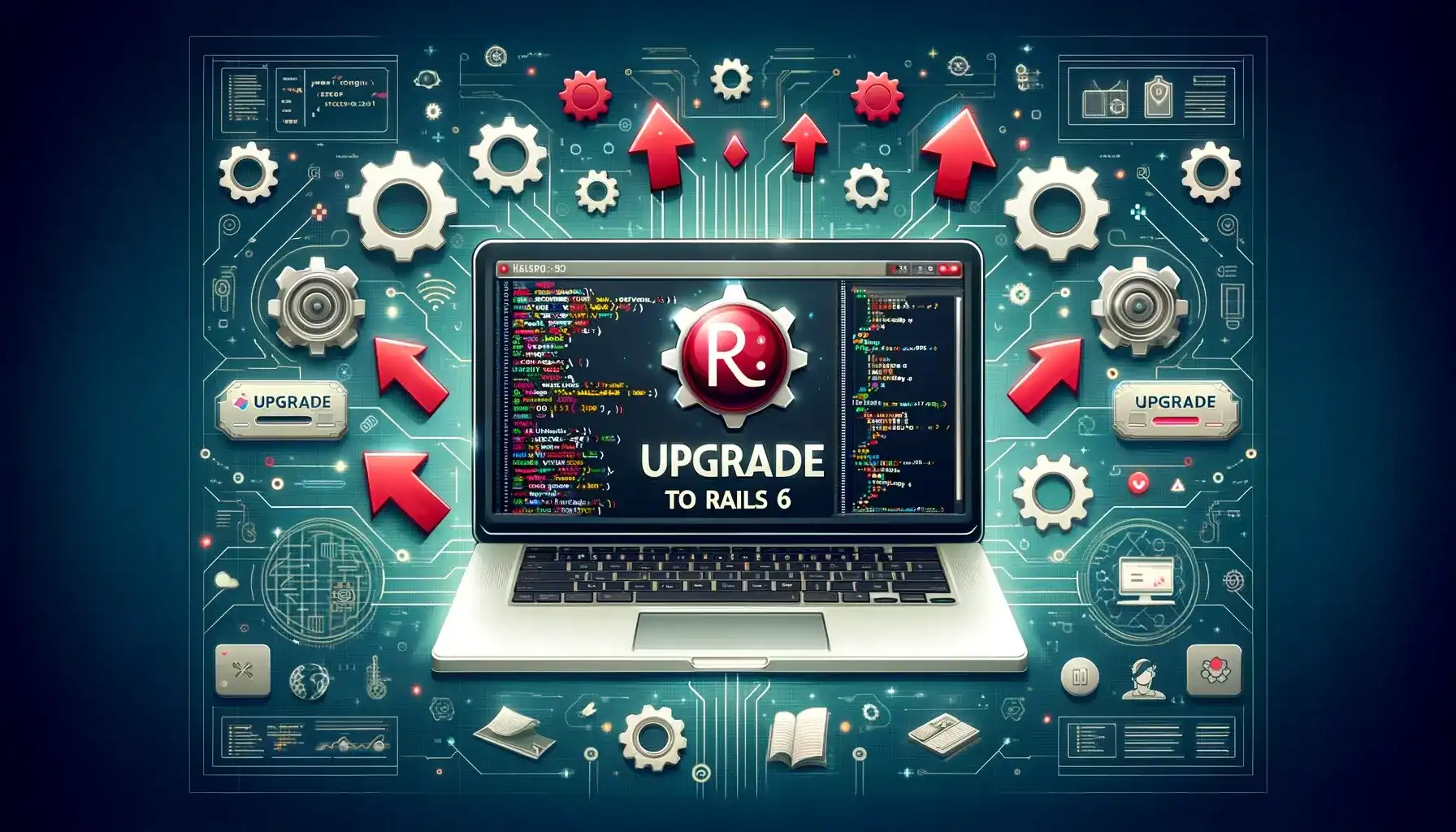Top Challenges Ruby on Rails Developers Face (And How to Overcome Them)
This article breaks down the most common challenges Rails developers encounter and provides practical solutions to tackle them head-on.

Pichandal
Technical Content Writer

Ruby on Rails is a robust framework, with thousands of successful web applications built on it. Known for its simplicity, strong community, and “convention over configuration” approach, it’s been a favorite among developers for years.
It’s fascinating to see how Rails has evolved from its first version to the recent version- Rails 8.0. It continues to bring in amazing features, better scalability, stronger security, and even more flexibility. And with its ever-growing community, Rails keeps getting better every day.
But let’s be real—no framework is without its challenges. Scaling issues, performance bottlenecks, security concerns, and upgrading headaches are just a few hurdles Rails developers face. With 18+ years of experience in Ruby on Rails development, we’ve seen it all. (Recognized by Clutch as a top Ruby on Rails development company in 2024!)
In this article, we’re breaking down the most common challenges Rails developers encounter and, more importantly, how to tackle them head-on. Whether you’re a seasoned Rails pro or just getting started, we’ve got you covered. Let’s get into it!
Ruby on Rails: 7 Developer Challenges and Practical Solutions

1. Performance Bottlenecks in Large Applications
The Challenge
As Rails applications grow, handling large datasets and complex queries will become a major challenge for developers. Queries take longer, response times lag, and scaling feels like a tough climb. The root cause is inefficient data handling that doesn’t keep up with the app’s growth. What worked for a small app won’t hold up as you grow, and you need a smarter approach to handle this.
The Solution
First things first, proper indexing. Without it, your database becomes like a massive library with no catalog. At RailsFactory, our expert rails developers continuously optimize performance by adding indexes to frequently queried columns, helping the database find records faster and cutting down query times instantly.
But even with indexing, hitting the database too often can slow things down, which is where caching makes all the difference. We use tools like Redis or Memcached to store frequently accessed data in memory, reducing the load on your database and keeping things snappy.
For tasks that take time like sending emails or processing large reports, background jobs with Sidekiq ensure they run behind the scenes instead of blocking user requests. If your database is still struggling under heavy loads, table partitioning can break large datasets into smaller, more manageable chunks for faster queries.
Also, our developers keep the practice of reducing excessive ActiveRecord callbacks. It prevents unnecessary database calls that quietly drain performance.
2. Scaling Rails Applications for High Traffic
The Challenge
High traffic and database-heavy operations can overload Rails applications, causing slow response times and performance degradation. Without proper scaling strategies, keeping applications stable becomes a constant challenge for developers.
The Solution
We know that scaling isn’t just about throwing more servers at the problem, it’s about making smart architectural choices. Our developers rely on horizontal scaling, adding more application servers behind a load balancer to evenly distribute traffic and prevent any single server from getting overwhelmed. We also use database sharding, splitting large datasets across multiple databases to reduce contention and eliminate bottlenecks before they start.
Beyond infrastructure, fine-tuning the database is critical. Our team leverages tool like New Relic to pinpoint slow queries and optimize them before they impact performance. We also offload heavy computations to background jobs with Sidekiq, ensuring smooth user interactions even during traffic spikes. With these strategies, we help Rails applications scale predictably and seamlessly—without compromising speed or stability.
3. Security Vulnerabilities in Rails Applications
The Challenge
Security threats are always evolving, and Rails applications are no exception. Without proper safeguards, vulnerabilities like SQL injection, Cross-Site Scripting (XSS), and Cross-Site Request Forgery (CSRF) can expose sensitive data and put users at risk. Attackers often exploit poorly sanitized inputs, insecure queries, or outdated dependencies to gain unauthorized access. For developers, the challenge isn’t just fixing security flaws, it’s staying ahead of them.
The Solution
Security isn’t something you set and forget. It is a never-ending task that requires continuous vigilance. At Railsfactory, our Ruby on rails development team ensure every application we build follows security best practices. We sanitize user input using Rails' built-in helpers like sanitize and strip_tags to prevent XSS attacks. To guard against SQL injection, we stick to ActiveRecord methods like where and find_by, avoiding risky raw SQL queries altogether.
Beyond code hygiene, we enable CSRF protection with protect_from_forgery to block unauthorized requests. Regular updates to Rails and its dependencies ensure our apps remain protected from emerging threats. To further strengthen security, we integrate tools like Brakeman for static code analysis and bundler-audit for identifying vulnerable dependencies.
These tools are embedded into our pre-commit hooks or CI/CD pipelines, ensuring that high vulnerabilities are flagged on every commit or push. This approach makes security an ongoing process, seamlessly integrated into development workflows, rather than a last-minute fix.
4. Debugging and Troubleshooting Production Issues
The Challenge
Some bugs are experts at flying under the radar, they don’t show up in local development but surface only in production. The difference in data volume, third-party integrations, and real-world user behavior can make issues hard to reproduce. Without robust logging and monitoring, tracking down these elusive bugs becomes a time-consuming headache for developers.
The Solution
To keep our applications always production-ready, we implement structured logging with Lograge for cleaner and more actionable logs. Using Rails.logger.debug, our developers capture key events for better visibility into what’s happening behind the scenes.
Real-time monitoring tools like Sentry, Honeybadger, and Datadog help us catch and diagnose errors before they escalate. For performance bottlenecks, we rely on APM tools like New Relic, Appsignal and Skylight to identify slow database queries and optimize response times.
And to minimize unexpected hiccups, we maintain a production-like staging environment, allowing us to reproduce and fix issues before deployment. With these proactive measures, we stay ahead of production issues and keep applications running smoothly.
5. Upgrading Large Ruby on Rails Applications
The Challenge
Upgrading a large Rails application isn’t lesser than navigating a maze of breaking changes, deprecated methods, and gem compatibility issues. The longer businesses delay, the more technical debt piles up. This not only increases security risks but also makes upgrades significantly harder for developers.
The Solution
To deal with this, our developers take a careful, step-by-step approach to upgrades. Instead of blindly running rails app:update, we review changes manually to ensure nothing critical breaks. Automated tests with RSpec and Minitest help us catch issues early, while manual testing ensures critical workflows remain intact before deployment.
We also upgrade dependencies incrementally, updating gems in small batches to avoid compatibility nightmares. Staying on top of official release notes helps us anticipate changes and prevent unexpected surprises. By following this structured approach, we successfully upgrade larger applications and make sure they are secure and performant—without any last-minute chaos.
6. Managing Dependencies and Gem Bloat
The Challenge
Over time, Rails applications often accumulate unnecessary gems (some outdated, some no longer supported). This leads to dependency conflicts, security risks, and performance slowdowns. Keeping track of which gems are essential and which ones are just adding bloat can be a real struggle.
Solution:
We suggest conducting regular dependency audits to keep the applications clean and secure. Tools like bundle outdated and Bundler’s bundler-audit command help us catch vulnerabilities early, while we proactively trim unnecessary gems to prevent bloating. Besides, choosing well-maintained gems helps us ensure long-term stability.
And when it comes to Rails upgrades, we use Railsup, our in-house Rails compatibility checker, to identify potential blockers early, making every upgrade smoother and stress-free. (Railsup is available for free to anyone looking to simplify their Rails upgrade process!)
7. Keeping Up with Rails Updates
The Challenge
Rails evolves rapidly, with frequent updates bringing security patches, performance boosts, and new features. But many teams put off upgrades, either due to tight deadlines or fear of breaking changes. Over time, this leads to technical debt, outdated dependencies, and a more challenging upgrade path.
The Solution
We make staying up to date a consistent part of our workflow, not an afterthought. Instead of scrambling to upgrade when issues pop up, we make it a routine—setting aside time for updates so our apps never fall behind. Keeping an eye on release notes helps us stay ahead of changes, and feature flags let us test new functionality without disrupting anything.
To keep things smooth, we proactively watch for deprecations by running rails app:update and checking logs for warnings. We believe it’s all about making updates a steady, manageable process rather than a last-minute scramble so that we keep our apps fast, and always ready for what’s next.
Final Thoughts
Building and maintaining a large Rails application is all about making smart decisions at every stage. While Rails is user-friendly framework, it comes with its own set of challenges for developers—from optimizing queries and scaling under heavy traffic to managing dependencies and keeping up with updates. But with the right strategies, these roadblocks don’t have to slow you down.
With 18 years of Ruby on Rails development expertise, developers at RailsFactory tackle these challenges head-on with proactive scaling, efficient debugging, and smart dependency management. To further support developers in their Rails upgrade journey, we built Railsup, a free Rails compatibility checker. While Railsup helps us stay ahead of compatibility issues, our structured upgrade approach ensures applications stay secure, optimized, and ready for the future.
If your growing rails project needs support, hire experienced ruby on rails developers from us. Whether it’s improving performance, scaling efficiently, or upgrading seamlessly, our team of seasoned Rails developers is ready to accelerate your success.



